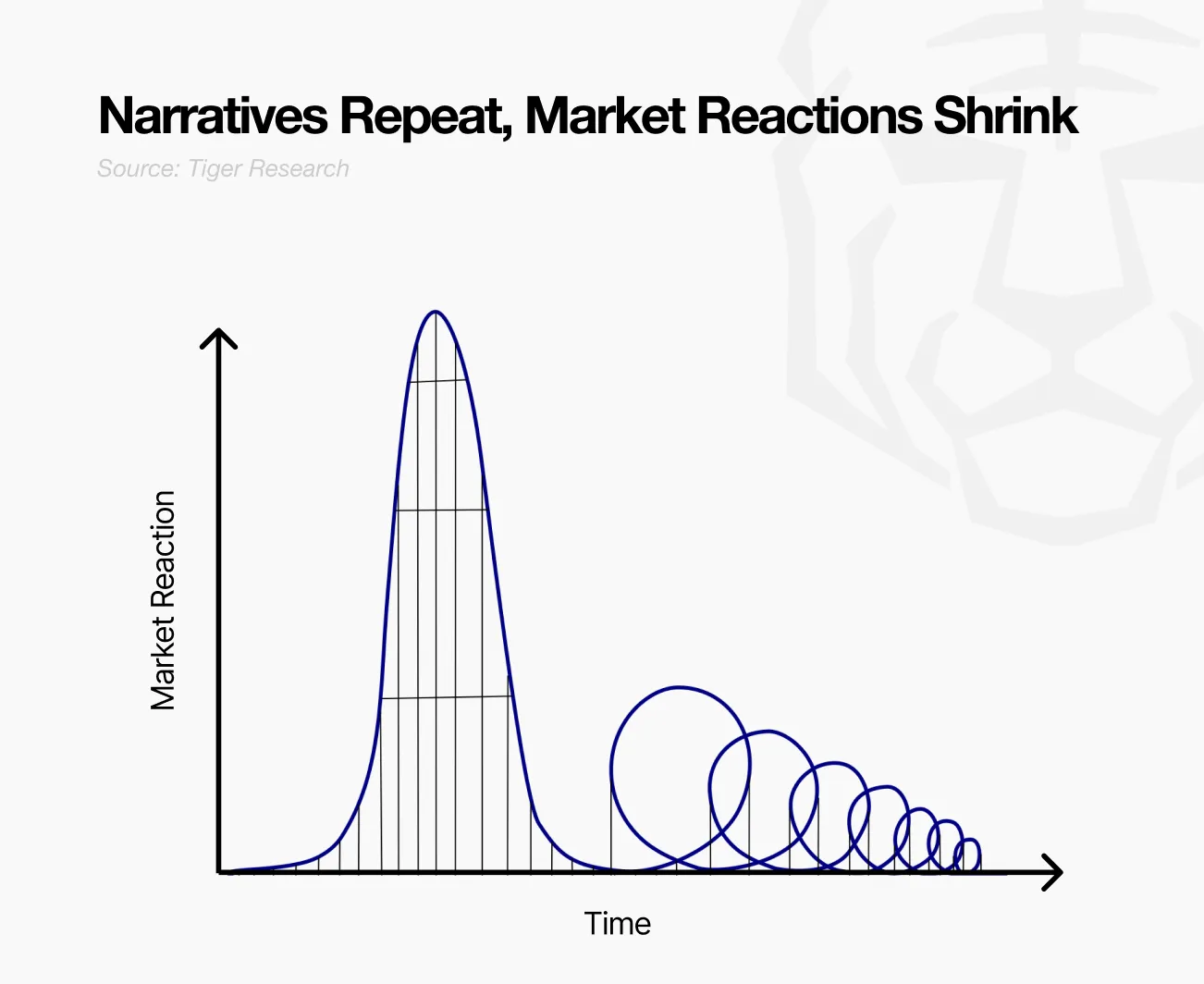Summary of key points
The Web3 industry is shifting from philosophical ideals to enterprise operations. This transformation is centered on actual profitability and structured operations.
The deepening of market participants’ understanding, clearer regulation and traditional financial capital have accelerated this transformation. Web3 projects are now subject to evaluation based on business results rather than ideology.
Enterpriseization is achieved through vertical integration mergers and acquisitions and institutional IPOs. Web3 is breaking through the experimental exploration stage and moving towards the mainstreaming of institutional standards.
1. Web3 Industry: From Ideology to Commercial Pragmatism
The Web3 industry has reached a critical turning point. Its value assessment system has broken through the scope of philosophy and idealism and is transforming into a business-oriented industry. In the past, decentralization as a core ideological value was far superior to commercial considerations. Even projects that lack an immediate profit model can be recognized for their potential, and the speculative boom in the cryptocurrency market has reinforced this tendency.
Recent developments show a fundamental shift: projects are beginning to build substantial profit models and accept evaluations based on business performance. Some projects have generated considerable revenue and gained market recognition, and the Web3 industry is shifting from philosophical values to actual results evaluation systems.
This report analyzes this structural shift and explores new directions for the Web3 industry.
2. Changing rules of the game
Web3 industry rules are being restructured. The industrys focus has shifted from narrative-driven to effectiveness-first, marking its maturity. Three core factors drive the transformation: deepening market participants understanding, improved regulatory frameworks in various countries accelerating the institutional integration of Web3, and accelerated influx of traditional financial capital. These developments have established stricter industry standards.

Despite the markets maturity, Web3 remains responsive to strong narratives. The industry is essentially still an attention economy dominated by participants, where narratives form consensus through group emotional resonance and are ultimately reflected in market capitalization. Specific keywords or narratives can still attract attention and drive price spikes.
However, market participants are already highly familiar with this model, which has weakened the effectiveness of narrative response. Price increases driven purely by expectations are difficult to sustain, and the increase is significantly narrower than in the previous cycle, highlighting the limitations of the narrative-driven model.
Institutional integration and traditional financial capital have accelerated this transformation. While reducing project uncertainty, the regulatory framework requires higher transparency and accountability standards. Projects must demonstrate real business structures and operational performance, and vision alone is no longer enough. Traditional financial capital also uses quantitative indicators such as profitability, growth rate, and financial strength for evaluation, rather than short-term market reactions. Web3 evaluation standards have shifted from philosophical ideals to business fundamentals, fundamentally changing the rules of the game.
3. Web3 Industry: From the Age of Discovery to Enterprise
The Web3 industry is undergoing a fundamental shift in structure and strategy. Projects are not only focusing on product-market fit, but also on traditional business metrics such as sustainable profit models and stable cash flow. To achieve these goals, projects are evolving towards an organized corporate structure through traditional corporate means such as IPOs, strategic mergers and acquisitions, and vertical integration.
3.1 The Background and Necessity of Enterpriseization
Stablecoin market value trend data source: rwa.xyz
In the early days, Web3 was similar to an experimental ecosystem centered around small teams. Although it maintained the agility of a startup, as the industry developed, the importance of structured operations became increasingly prominent. This is like the rise of commercial companies in the Age of Exploration: individual explorers initially relied on royal funding for voyages, and as trade routes opened and expanded, commercial organizations that systematically managed risks and capital came into being. The enterprise transformation of Web3 has the same logic.
3.2 Accelerating Growth through Corporate Expansion Strategies
Web3 enterprise is not only organizational expansion, but also the deepening of the connection between business development and institutional capital. It mainly presents two directions: achieving ecological synergy through vertical integration and achieving institutional system integration through IPO.
Aggressive mergers and acquisitions to achieve vertical integration are essentially an inevitable choice under the maturity of the industry and the intensification of competition. Enterprises need to unify user experience and create service synergies to seize market share. Jupiter integrated Solanas ecological transaction functions through the acquisition of Meme coin trading application Moonshot, NFT market DRiP Haus, and crypto portfolio service SonarWatch; crypto payment company Moonpay acquired Solana payment application Helio; stablecoin issuer Circle acquired Hashnote. These vertical integrations mark an important paradigm shift in the Web3 industry.
While this type of integration may superficially resemble traditional corporate growth strategies, it actually reflects a fundamental shift in the fundamental principles of Web3. Early Web3 core values—decentralization and community governance—are being adjusted for efficiency and economies of scale, showing that projects prioritize market competitiveness and sustainability over ideological values.
On the other hand, companies are actively seeking institutional integration through IPOs. Circle disclosed the details of USDC reserve management in the process of promoting IPO to enhance transparency; Coinbase became the first Web3 company to adopt accounting standards and disclosure system through Nasdaq listing. These institutionalization measures show that Web3 projects are evolving from technical experiments to stable corporate structures, establishing a foundation for resolving regulatory uncertainties by adopting traditional capital market norms, gaining the trust of institutional investors, and reaching a wider market.
IV. Conclusion
The Web3 industry has officially entered the enterprise era, with projects being reorganized around structured operations and quantifiable business results, transcending the stage of defining value by potential and philosophical ideals.
Institutional integration drives the transformation process, and stakeholders demand structural sustainability rather than just technical experiments. Projects must explore the practical utility based on decentralization and transform it into real business opportunities.
This shift is not a temporary phenomenon, but a necessary step to bridge the gap between idealism and long-term sustainability. Corporatization is not a departure from the original vision, but rather a reinforcement of elements that were often overlooked in the early narrative: investor protection, operational accountability, and a market system based on trust.
The Age of Exploration revealed new frontiers, and today’s enterprise-oriented Web3 projects are building on these discoveries to lay the foundation for broader market expansion. This phase of development will determine the future direction of the industry and is worth paying close attention to.










